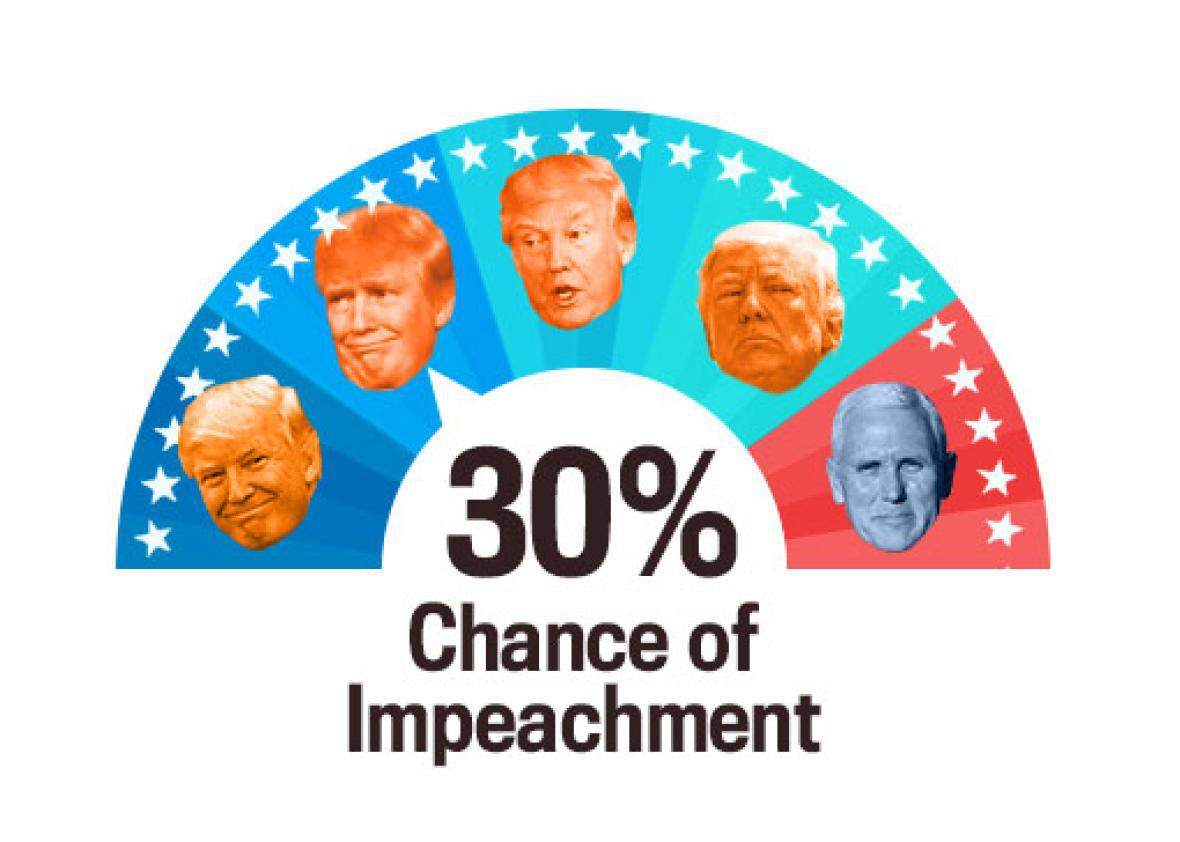
Mario Tama/Getty Images
In the tradition of the Clintonometer and the Trump Apocalypse Watch, the Impeach-O-Meter will be a wildly subjective and speculative daily estimate of the likelihood that Donald Trump leaves office before his term ends, whether by being impeached (and convicted) or by resigning under threat of same.
Is Donald Trump going to get impeached by the House and convicted by the Senate for being a corrupt, Russia-colluding butthead?
Here are some of the factors currently weighing toward a likelihood of impeachment:
- We seem to be getting a new story every day (and sometimes more than once a day) about Trump doing something obstruction-of-justice-y related to the investigation of his campaign’s connections to Russia. Administration figures also keep getting caught saying things about their Russia connections that aren’t true—even in cases where the underlying behavior that’s being covered up (like Jeff Sessions, when he was still a senator, meeting with the Russian ambassador) isn’t necessarily inappropriate. As they say, the coverup is always worse than the crime.
- The new Justice Department special counsel leading the Russia investigation, former FBI director Robert Mueller, is widely believed to be a straight-shooting type who will doggedly conduct an legitimate investigation.
- Trump’s approval rating is stuck below 40 percent and Democrats have a solid lead over Republicans in so-called generic congressional ballot polling for 2018. Recent events whose impact may not be fully accounted for in those polls probably won’t help Trump either. If Republicans conclude that Trump is an irredeemable political liability, they may suddenly and coincidentally also start to conclude that, say, his decision to fire James Comey constituted a violation of public trust.
- Two Republican representatives have already said they believe Trump may have committed impeachable offenses, while several other Republicans in Congress have criticized him in more mild terms.
And here are some of the factors currently weighing against a likelihood of impeachment:
- One of the aforementioned Republicans is libertarian renegade Justin Amash of Michigan and the other is Carlos Curbelo of Florida, who is from a district that Hillary Clinton won by a wide margin in 2016. Neither are indicative of mainstream GOP thinking.
- Trump’s approval rating among Republican voters is still in the 80s. House Republicans, who at the moment would have to supply at least 23 of the votes required for impeachment, still love Trump so much that—if you can recall the ancient pre-history of two weeks ago—they passed his insanely unpopular health care bill for basically no other reason than that he wanted them to.
- The well-regarded Cook Political Report still currently projects 234 seats as solidly, likely, or leaning Republican in the 2018 race. (You need 218 for a majority.)
- There has still not yet been any evidence made public that anyone associated with Trump or his campaign communicated with any Russian operative about that country’s effort to sabotage Hillary Clinton’s campaign. (Or that any other form of inappropriate coordination—say, accepting laundered Russian funds as campaign contributions—took place.)
The math and the evidence don’t add up, at this point, to a more-than-likely chance of removal from office. (Sorry, many Slate readers.) But there’s also something that feels unsustainable about the pace at which the president keeps committing giant gaffes—even those, such as giving top-secret Israeli intelligence to the Russian foreign minister, that aren’t directly related to the collusion investigation. There’s also enough financial intrigue in Trump’s past that it would not be surprising if Mueller (or a state attorney general, or U.S. attorney) dug up something that we don’t yet know about that’s either clearly illegal or which the majority of Americans find to be obviously disqualifying. We’ll set our initial Trump Impeach-O-Meter, then, at a significant but still cautious 30 percent.

Photo illustration by Natalie Matthews-Ramo. Photos by Chip Somodevilla/Getty Images, Win McNamee/Getty Images, Chris Kleponis-Pool/Getty Images, Drew Angerer/Getty Images, and Peter Parks-Pool/Getty Images.